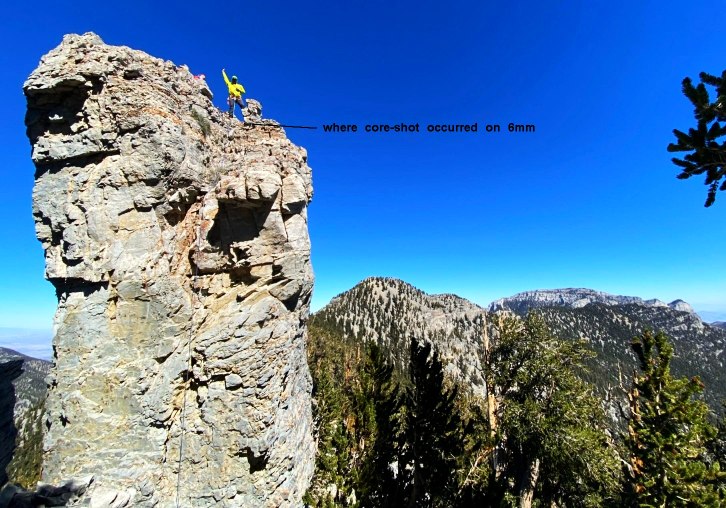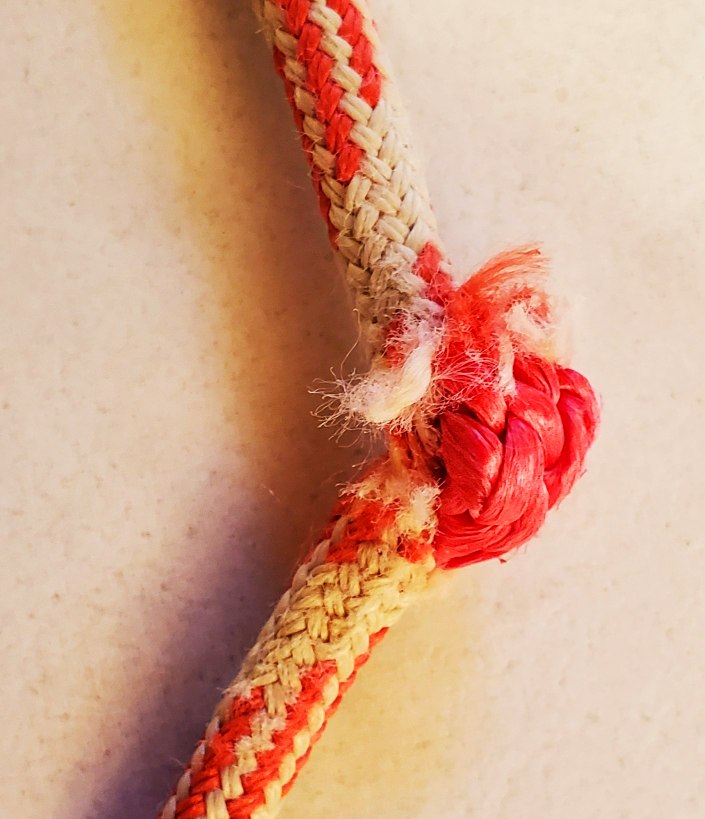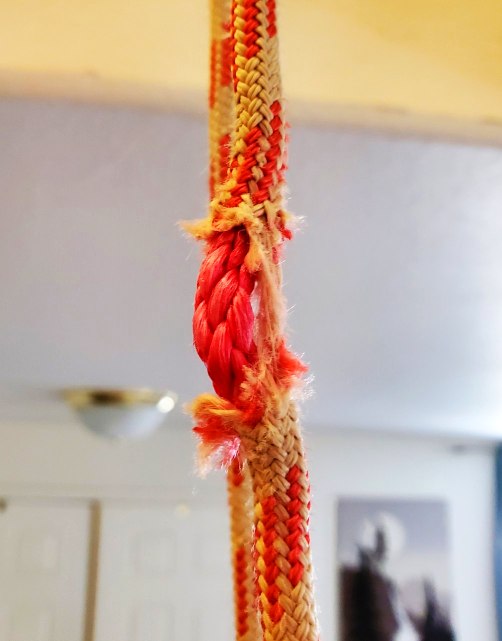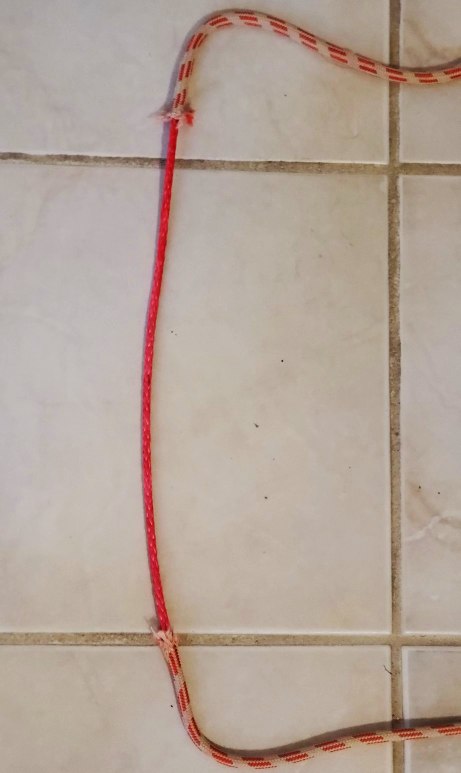
Core-shot! Fear in
the hearts of climbers!
In Oct 2021, we climbed a rocky tower, and the process involved getting a 6mm rope over the top. Alas, the wind gusted, and the rope, though it made it all the way over, stuck on sharp boulder that was clearly moving as the rope was pulled. So Kevin patiently pulled the rope, released tension, and pulled again and again till the boulder came crashing down and the rope was free. But all that sawing motion cut through the polyester sheath, making the rope “core-shot.” The photo below shows where the core-shot occured, as the rope was pulled back-and-forth on the rock pile to right:

But this was not an ordinary rope. The core is braided 4000+
lb test SK78 Dyneema, and was completely unaffected by the rock abrasion. If
you’ve ever tried to cut Dyneema (versus polyester) with normal scissors, you
understand.
Even though the slick Dyneema core makes the sheath slip
over the rope “more easily”, in an ascent, you still can’t pull the sheath loose
until you are right near a complete break, and then it quickly scrunches up
till it is once again tight on the core. In our situation, the break was about
13 feet above the last point where the rope was weighted by scwhabisch hitches.
But what about a situation where the lower side is
untensioned, like in a rappel? One of the creepy issues with
dyneema-core ropes, is that cores are very slippery compared to a
polyester sheath. In fact, some manufactures sew the sheath and core
together near the ends of the rope, hoping this will prevent the rope
from slipping off (that wasn't the case for my rope).
Wouldn’t you like to know what happens when you rap over a
section with a core shot? I certainly
did! And I had a safe place to try – namely the reinforced rap setup in my
stairwell. I tried it twice – once with a few stands of polyester sheath still
connected, and once with the strands severed and the two pieces of sheath
separated by an inch.
But first, I almost always rap on this rope with a single Munter
on double strands.
8” of each strand of 6mm cord is actually in Munter hitch at any one time.
The core-shot was ~30' from one end of the rope; I set up the trials so that 30' would be below the munter.
I’ll put figures below to show how the rope looked in different stages.
Initially:

After the first rap, the pieces of sheath moved apart a little, still held by a few strands of polyester:

Then I cut the sparse remaining strands. Then I rapped on it again, and opened up a 13” gap between the separated sections of sheath:

But after getting past that, the sheath tightened on the
rope and didn’t move for the rest of the way.
I can’t say what would happen with a more aggressive rap device – or a
single-strand rap.
Not that you should ever try this, but… the more you know,
the more you know.